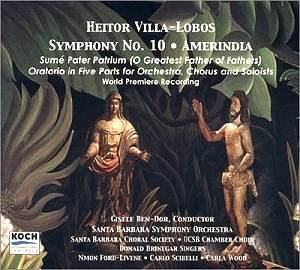 Composer: Malcolm Arnold
Composer: Malcolm Arnold
Works: Symphonies 7 (Op. 113), 8 (Op. 124), 9 (Op. 128), Concerto for Oboe and Strings (Op. 39)
Performers: Jennifer Galloway (oboe), BBC Philharmonic Orchestra/Rumon Gamba
Recorded: Studio 7, NBH Manchester, January 2001
Label: Chandos CHAN 9967(2)
Duration: 116:04
In the pantheon of British symphonic literature, Malcolm Arnold occupies a distinguished yet often overlooked niche. His Seventh, Eighth, and Ninth Symphonies, alongside the Concerto for Oboe and Strings, present a vivid tapestry of emotional depth and stylistic diversity. The recent Chandos release, featuring the BBC Philharmonic under Rumon Gamba, offers an engaging exploration of these works, albeit with interpretative choices that elicit a spectrum of responses.
Arnold’s symphonic journey, especially in these late works, reflects a composer grappling with personal tribulations while seeking to articulate the human experience. The Seventh Symphony, with its tumultuous first movement, is marked Allegro energico, yet Gamba’s approach often veers into the territory of unbridled fervor. This interpretation, while electrifying, risks overshadowing the inherent tension and fragility that Arnold embeds within the score. The movement’s aggressive drive, reminiscent of a Mravinsky-like ferocity, does indeed generate excitement, yet one could argue that it sacrifices the “cumbersome” quality Arnold intended—a musical representation of struggle and introspection. As Gamba propels the first movement to a brisk 32 minutes, compared to Andrew Penny’s more measured 38, the urgency may come at a cost; the baleful grandeur of the deep brass, which could have resonated with haunting gravity, instead emerges somewhat glossed over.
In contrast, the second movement, marked Andante con moto, finds Gamba aligning more closely with Arnold’s lyrical intentions. Here, the conductor allows the orchestral textures to breathe, conveying a sense of melancholy that complements the music’s introspective nature. It is a poignant reminder of the emotional weight that Arnold ascribes to this symphony, a weight that can easily be lost in a reading that prioritizes speed over substance.
The Eighth Symphony, by comparison, offers a canvas upon which Gamba’s interpretative style can flourish without the shadows of excess. The first movement’s Allegro is imbued with a more nuanced pacing that allows for greater delineation of thematic material. Gamba achieves a commendable balance, navigating the intricate interplay between tension and release. While Penny’s interpretation might be regarded as more atmospheric, Gamba injects a vibrant energy that invigorates the conflict, resulting in a performance that feels refreshingly alive without compromising the integrity of the score.
The Ninth Symphony, often perceived as Arnold’s most personal, reflects the composer’s struggles during a tumultuous period in his life. Gamba’s interpretation here is marked by a measured restraint that again underscores the emotional gravity of the work. The finale, in its starkness, echoes the desolation that characterizes Arnold’s late style, and while both Gamba and Penny approach this movement with care, it is Gamba’s slightly more urgent pacing that brings a compelling juxtaposition to the work’s overall somber narrative. The comparison of their performances reveals a fascinating interplay between Gamba’s energetic interpretation and Penny’s more introspective approach—both valid, yet distinctly colored by their respective interpretative philosophies.
The addition of the Concerto for Oboe and Strings (Op. 39) serves as a delightful contrast to the weighty symphonic explorations. Jennifer Galloway’s performance is marked by an affectionate clarity, her phrasing thoughtful and expressive. While the orchestration may occasionally push her into the foreground, the balance remains satisfactory, allowing the nuances of Arnold’s writing, particularly the playful and almost mischievous finale, to shine through. This work, a much earlier piece, foreshadows the thematic development seen in the later symphonies and serves as a reminder of Arnold’s extraordinary range.
In terms of sound quality, Chandos delivers a recording that is both warm and detailed, allowing the BBC Philharmonic’s technical prowess to emerge without superfluous embellishments. The acoustics of Studio 7 offer a natural resonance that enhances the clarity of orchestral textures, although at times the balance between soloist and ensemble could be further refined.
Ultimately, the Chandos release is a significant addition to the Arnold discography, providing both a comprehensive survey of his late symphonic output and the delightful Concerto for Oboe. While Gamba’s interpretations may not always align with the more traditional readings found in the Naxos recordings under Penny, they offer a refreshing perspective that invites listeners to engage with Arnold’s music in new ways. It is a testament to the richness of Arnold’s symphonic language that both interpretations can coexist, each illuminating different facets of this complex and multifaceted composer.
For those seeking to delve into the depths of Arnold’s symphonic legacy, the choice between this recording and the Naxos offerings may ultimately come down to personal preference. Yet, one cannot overlook the historical significance of these works, which articulate a profound understanding of the human condition, steeped in the richness of Arnold’s unique voice.



